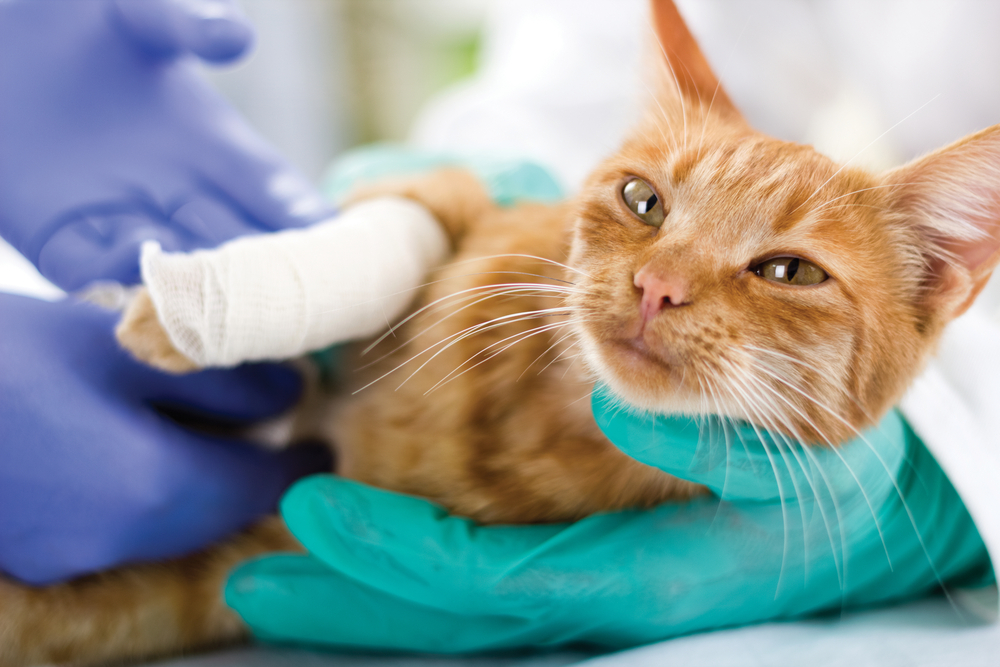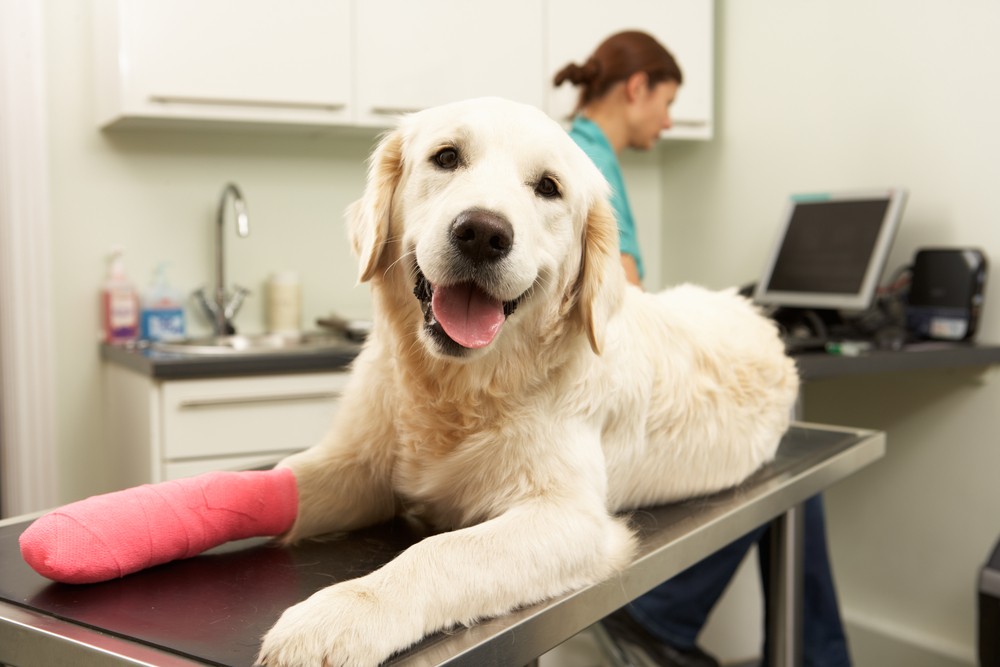How Much Does Pet Insurance Cost in 2023?

You can’t put a price tag on the joy pets bring to our lives. However, the costs of caring for a pet do add up. According to the latest figures from the American Society for the Prevention of Cruelty to Animals (ASPCA), the average annual cost of owning a dog or cat is roughly between $1,000-1,500…and even more for pups and kitties in their first year of life.
Still, most pet parents would agree we’re still getting the better end of the deal. But what happens if your pet’s care costs skyrocket due to an unexpected illness or injury? Or if you’re just looking for a way to reduce pet health care expenses to cope with the cost of inflation?
These days, an increasing number of budget-savvy pet parents are opting to purchase pet insurance plans as a way to help manage the rising cost of medical care for their furry family members. According to the North American Pet Health Insurance Association (NAPHIA), the number of insured pets in 2021 totaled 4.4 million, up 27 percent from the previous year.
Whether you choose an insurer that caters specifically to pets, or one like Lemonade Pet Insurance that offers policies for your pets, home, car, and even your life, pet insurance could help you save money on medical care and keep your dog or cat happier and healthier in the long run.
How Does Pet Insurance Work?
If you don’t know how pet insurance works and what it covers, it can be hard to decide whether or not to get it and which pet insurance company is best. So here’s a simple explanation to help you and your family make an informed decision about pet insurance.
Basically, in exchange for a fixed monthly payment (called a premium), pet insurance helps pet parents cover the cost of an insured dog’s or cat’s medical care. Just how much help you’ll get and how much you’ll pay in premiums depends on the pet insurance company and plan you choose, as well as what the plan covers.

According to NAPHIA, there are about 25 pet insurance companies in North America offering a wide range of insurance coverage options, including:
- Accident Only Policies – Typically cover expenses associated with things like car accidents, poisoning, or when a pet swallows a foreign object, like a sock.
- Accident & Illness – In addition to the above, may also cover illnesses, infections, digestive issues, and (in some cases) even things like cancer.
- Insurance with Embedded Wellness – These more comprehensive plans may include preventative care, like vaccinations, early screening diagnostics, dental care, etc.
- Endorsements – These are add-ons, which may cover additional expenses, such as routine check-ups or prescription pet foods.
There’s a lot of variety in how pet insurers pay for care, too. Some pet insurance companies reimburse a set dollar amount per covered procedure. Others offer co-insurance, which splits the cost of covered care into a percentage you pay and a percentage the insurer reimburses to you.
In order to reduce the cost of monthly premiums, some companies also offer deductibles at varying levels. These are set amounts pet parents must pay out of pocket for pet health care before their pet insurance benefits “kick in.”
What Does Pet Insurance Cover?
No one likes to think about the prospect of their pet getting sick or injured. However, when misfortune or illness strike, pet insurance can help make getting the care your pet needs much more affordable.
Though all insurance plans differ, (which is why it’s important to read the fine print!) here are a few of the health care expenses that could be covered by pet insurance:
- Broken bones
- Ear infections
- Breed-specific conditions, like hip dysplasia
- Hospitalization and surgery
- Wellness exams
- Bloodwork
- Vaccines
- Dental cleaning
- Alternative therapies like acupuncture
- Behavioral therapies
Is Pet Insurance Worth It?
This section features an affiliate link, meaning GreatPetCare may earn a small commission if you click through and make a purchase.
If costs are rising or your budget is tight, you may be wondering if it makes sense to take on yet another pet expense, like pet insurance.
However, much like health insurance for humans, pet health insurance coverage can play an important role in helping pet parents manage the cost of unexpected (and expensive) accidents or illnesses.
Here’s one example from Lemonade Pet Insurance.
Imagine for a second that your dog (sadly) requires knee surgery for an accidental injury. The prognosis is good for a full recovery, but the surgery is going to set you back a whopping $6,000.
How Pet Insurance Saves You Money
Without pet insurance, you might find yourself worrying about just where you’re going to get the money to pay for that unexpected surgery bill. But, if you had an accident-only insurance policy from Lemonade with a $250 deductible and 80 percent coinsurance, you’d have a lot less to worry about.
Here’s how it breaks down: If you’d already met your $250 deductible, once your claim is approved, the insurer would reimburse you 80 percent of the cost of the surgery ($6,000 x 80% = $4,800), reducing your total cost to just 20 percent ($6,000 x 20% = $1,200).
If you hadn’t yet met your deductible, you’d still only be paying a small fraction of the cost the surgery ($250 deductible + $1,200 for 20% co-insurance = $1,450), while the insurer reimbursed you for the balance ($6,000 for 80% coinsurance – $1,450 = $4,550).

In both cases, pet insurance could help you save big on costly (and necessary) medical expenses.
And even if your pet never needs such a surgery, pet insurance can save you money in other ways. Policies that cover screenings or preventative care can often help pets maintain an active, healthy lifestyle and avoid expensive health issues in the future.
How Much Does Pet Insurance Cost?
For the most part, what you’ll pay for pet insurance depends on a number of variables, including the insurance plan, provider, and coverage you choose, as well as the type and number of pets you plan to insure.
In some cases, you can also lower your premiums by choosing a higher deductible or a different level of co-insurance, if you choose an insurer that offers those options.

But it can be helpful to have a ballpark figure when it comes to budgeting, as well as comparing the quotes you receive from pet insurance companies. So here are some helpful estimates to keep in mind.
How much is pet insurance for dogs?
According to the NAPHIA, dogs are far more likely to be insured than cats. In fact, dogs accounted for over 80 percent of insured U.S. pets in 2021.
On average, last year the annual Accident Only premium for dogs was $293 per year (around $20/month), and the annual Accident & Illness premium was $583 per year (around $49/month).
However, costs vary widely according to the provider and type of insurance plan your choose. For example, Lemonade Pet Insurance offers policies starting as low as $10/month for dogs.
How much is pet insurance for cats?
Though medical care for cats is generally less expensive than it is for dogs, unexpected cat health care expenses can still put a big dent in your budget. Despite that, cats made up less than 20 percent of insured pets in 2021, according to NAIPHA.
On average, last year the annual Accident Only premium for cats was $130 per year (around $11/month), and the annual Accident & Illness premium was $343 per year (around $29/month).
Factors that Affect Your Pet Insurance Cost
If you’re budgeting for pet insurance, be aware that there are a number of factors that can impact the cost of pet insurance. These include:
Cat vs. dog: Dogs are generally more expensive to insure than cats because they are more prone to develop hereditary health issues, and their care tends to be more expensive. Cats that mainly stay inside also have a reduced risk of injuries.
Breed: The breed of your cat or dog can also impact cost, especially if your breed is prone to hereditary health complications, such as hip dysplasia.
Age: Older pets typically will require more health care, which can make costs go up.
Pre-existing conditions: A pre-existing condition is any condition your pet had (or showed signs of having) before your insurance coverage officially begins.
Location: Because the cost of pet medical care varies from state to state, what you pay for insurance may, too. For example, medical costs in California are higher than they are in Tennessee, so your Californian canine would cost more to insure.
How to Compare the Cost of Pet Insurance Plans
Once you’ve decided that pet insurance is a good idea for your budget and your pet’s long-term health, the next step is to compare quotes from several pet insurance companies.
In most cases, you can easily obtain an initial quote online by answering some simple questions. For example, you can get a Lemonade Pet Insurance quote for a base plan and add-ons in seconds by filling out an easy online survey.
But keep in mind that most plans can be adjusted to meet your pet’s health needs, as well as your budget. It’s important to ask the following questions when choosing a pet health insurance plan:
Can plans be customized?
Some pet health insurers offer different coverage plans that can be customized depending on your pet’s needs. Be sure you understand what’s covered in your quote and what’s not to ensure it’s the right option for your pet.
For example, standard coverage may be appropriate for older pets. But young puppies or kittens often require specialized care in their first few years. So you may want to look ask about specialized care for younger pets, like Lemonade’s Puppy/Kitten Preventative package for pets under two years old, which covers things like spaying and neutering, microchipping, plus more vaccinations.
What are add-ons and how do they affect the overall cost of the plan?
Often your pet health insurance providers have different tiers of coverage. Ask for an explanation of what is covered under each tier and how that would affect your monthly premium, as well as if there are any limits.
Is dental insurance included?
Just like with human health care insurance, dental coverage is not always included in a basic pet insurance plan. But dental care has a big impact on overall health, so be sure you ask if there are add-ons for preventative care, like routine professional teeth cleaning, or coverage for dental disease treatment.
Are there any savings for covering multiple pets?
Bundling pet insurance policies to cover all the pets in your home may earn you a discount. If you’re considering insurance companies that offer non-pet policies, like car and home insurance, it’s a good idea to ask if they offer bundling discounts, as well.
Does the plan cover the cost of: blood tests, ultrasounds, X-rays, MRIs, medications, alternative therapies, etc.?
It’s hard to know exactly what your dog or cat may need in the future, especially if you’re investing in pet insurance for a puppy or kitten. So it’s best to be as detailed as possible when you’re requesting a quote, to ensure all your potential future needs are covered.
Choosing an affordable pet insurance plan that will cover all your pet’s needs may seem like a daunting task, but many pet health insurers offer customizable plans to meet your financial budget and promote your pet’s long-term health.









